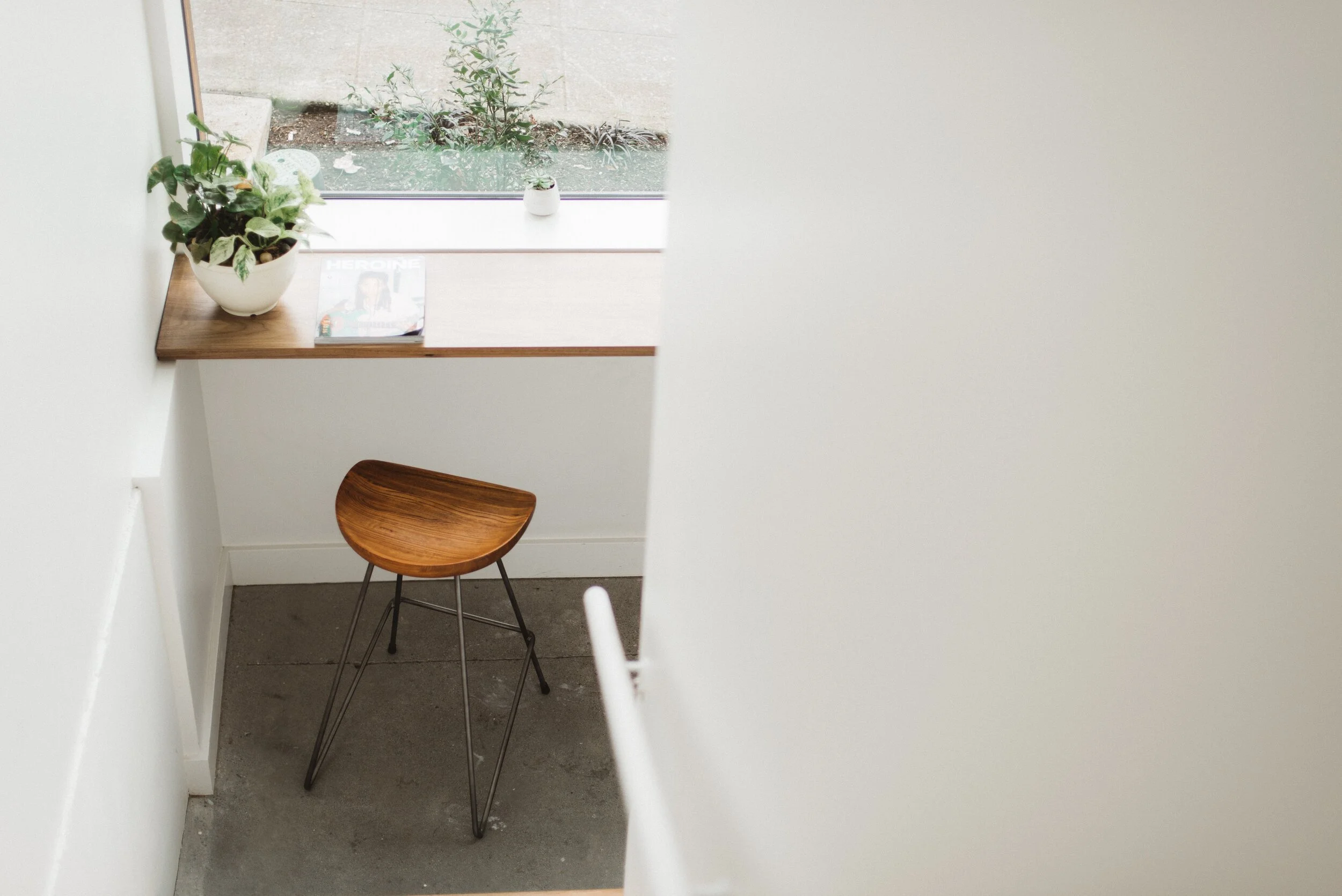How to Get Better Posture
Dog with “lounge” or “slouch” posture on a couch.
Having good posture is a challenge, but why?
There is no one-size-fits-all answer to this question because we are all different. The biggest takeaway is to move as much as possible throughout the day. Vary your position or posture and set up your workstation to encourage and reinforce positive habits. Accept the difficulty that sitting or standing with good posture may be simple but it is not easy. Changing your everyday biomechanics is a challenge and won’t happen overnight. But behavior change can happen with consistency of effort.
pos·ture: the position in which someone holds their body when standing or sitting.
er·go·nom·ics: the study of people's efficiency in their working environment.
What does your work space look like?
Where to start?
Start by understanding and assessing your space by asking some questions.
How much time you spend at a desk or in a car?
What is achy and stiff at the end of the day?
Does stiffness crop up after certain activities?
Do I favor one side of my body more than the other?
Am I always crossing my right leg over my left or shifting to one side?
Is my head always looking down and to the left?
These questions are meant to get you thinking and starting to understand first how you move and position yourself throughout the day. Once you start to uncover patterns it will be easier to work on improving your posture throughout the day or night. Don’t forget sleeping posture can contribute to those aches and pains too!
How to find your seat
Let’s start with sitting and the big takeaways.
Encourage open angles and symmetry.
Place your feet flat and grounded below you.
Find your seat by sitting on your ischial tuberosities or sit bones rather than rounding your lower spine and finding your weight bearing down on your sacrum or tailbone.
If you can, find a seated position where your knees can be below your hips opening up that angle.
Allow you ears to align over your shoulders with your shoulders drawn down and back but also remaining relaxed.
Bring your elbows in closer to your rib cage.
Should I sit or stand?
Standing desks are becoming more and more prominent and are a great tool but of course they are not the end all be all and should be used in combination with sitting to build in variety of position throughout your day.
Be aware of shifting and placing all your weight into one hip or leg over the other when standing.
Be mindful of your pelvic position. Don’t allow yourself to sway forward or back and keep your knees slightly bent and not locked out.
Use a box or ball to allow one leg to come up and rest for some time.
Wear footwear that allows your entire foot to be grounded down or try being barefoot if you can.
How much of the day should I stand or sit?
There is no “right” answer for this question. Rather approach this question like an experiment and try out different amounts of time in each position and gauge how your body responds. If you need a more regimented routine try to stand in the morning and sit in the afternoon. Or couple your position with different work tasks that makes sense to you.
Understand that adding in a standing component to a sitting workstation should be done gradually similarly to breaking in a new pair of shoes.
Break in standing like you would a new pair of shoes, gradually.
What stretches should I do throughout the day?
Find the opposite movements or stretches for the positions you hold for prolonged periods of time.
If you are seated with a forward rounded lower back, stand up and try a standing low back extension.
If you shoulders fall forward and rounded and your head creeps toward your computer try a Bruegger’s stretch.
If you are standing and always shifting to the right try a lateral side bend to the left.
If you are typing continuously for hours. Stop and add in some wrist stretches or circles.
The big takeaway
The end goal is greater variety of position throughout the day. The more you can move the better. Try to be committed for two weeks consecutively to truly make lasting changes and be patient if it takes longer.




